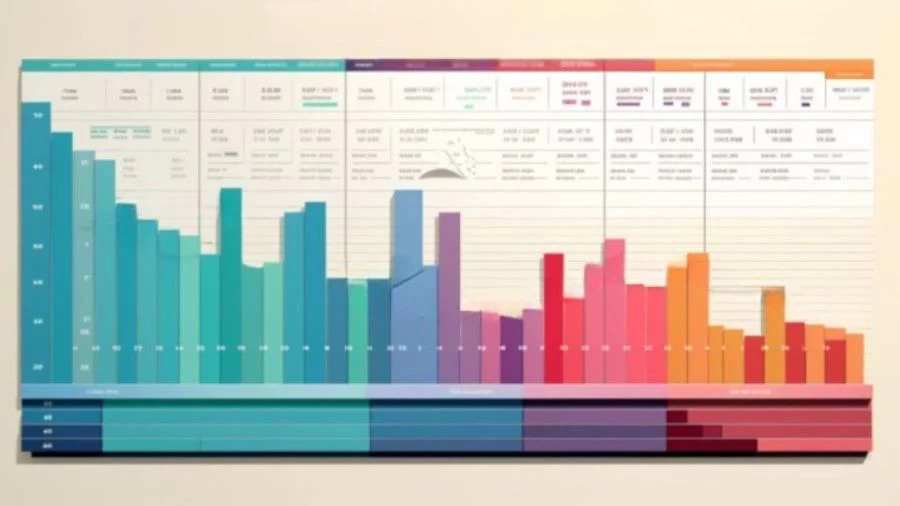
Amortization Schedule and What Makes Amortization Important?
An amortization schedule is a detailed plan that shows how much of each loan payment goes towards reducing the principal balance and paying the interest over time, helping borrowers understand and manage their long-term loans like mortgages.
by Sai V
Published Aug 19, 2023 | Updated Oct 10, 2023 | 📖 5 min read
Amortization Schedule
An amortization schedule is a crucial financial tool used by borrowers, especially those with long-term loans like mortgages. It provides a detailed breakdown of each periodic payment, showcasing the division between the principal and interest components. In the initial stages, a majority of the payment primarily covers the accrued interest, with a smaller portion allocated to reducing the principal balance.
However, as the loan progresses, the amortization schedule reveals a shift where a more substantial part of the payment is applied towards paying down the principal, leading to a systematic reduction in the outstanding loan amount over time. This schedule not only helps borrowers understand the evolving nature of their payments but also allows them to plan their finances effectively, ensuring a clear path toward complete repayment of the loan.
What Does the Term Amortization Mean?
Amortization refers to the systematic process of repaying a loan, such as a mortgage, through scheduled, equal installments over a specified period. In the context of a mortgage, each monthly payment made by the borrower covers both the principal amount borrowed and the accrued interest. These payments are structured according to an amortization schedule, wherein initially, a larger portion of the payment goes towards paying off the interest, while the remainder reduces the principal balance.
As the loan matures, the ratio shifts, and a greater portion of the payment is applied to the principal, gradually decreasing the outstanding debt. Amortization plays a crucial role in enabling borrowers to steadily build equity in their homes over time, as each payment contributes towards ownership while also covering the cost of borrowing.
What is Loan Amortization?
Loan amortization is the gradual repayment of a loan over time, involving regular installments that encompass both principal and interest. This process ensures that the debt is fully paid off by the loan's maturity date. A loan amortization schedule provides a detailed breakdown of these periodic payments, delineating the specific amounts allocated to principal and interest.
In the initial stages of the loan, a larger portion of the payment covers the interest, but with each subsequent payment, more funds are applied to reduce the principal balance. Modern financial calculators, spreadsheet software such as Microsoft Excel, and online amortization calculators facilitate the calculation of loan amortization, offering borrowers a clear understanding of their payment structure and how additional payments can accelerate the loan payoff.
Find valuable information at MarketsHost, where finance and business come together for your benefit.
What Are the Advantages and Disadvantages of Loan Amortization?
Here are the key advantages and disadvantages of loan amortization, offering insights into the predictable payment structure and gradual reduction of outstanding balances, alongside challenges like initial interest-heavy payments and limited equity growth in the early stages.
Advantages of Loan Amortization
- Amortized loans offer fixed, predictable payments, aiding long-term budgeting and financial planning.
- Each payment includes a principal component, systematically reducing the total owed over time.
- Regular payments prevent the buildup of large, unexpected payments, promoting financial discipline.
Disadvantages of Loan Amortization
- Early payments primarily cover interest, leading to slow equity buildup, especially in mortgages.
- Slow equity growth might challenge those planning to sell the asset shortly after purchase.
- Level payments could result in higher total interest payments, especially for long-term loans.
What Makes Amortization Important?
Here are the key points outlining the importance of amortization:
Financial Clarity: Amortization provides businesses and investors with a clear understanding of costs over time, aiding in accurate financial planning and budgeting.
Loan Repayment Understanding: Through amortization schedules, borrowers can distinguish between principal and interest payments, enabling them to track the reduction of the loan amount over time.
Tax Benefits: Amortization, especially of intangible assets, reduces taxable income, lowering the overall tax liability and allowing businesses to retain more earnings for investment.
Asset Value Reflection: Amortization reflects the gradual decrease in value of intangible assets, ensuring accurate representation on balance sheets and preventing overstatement of asset values.
Strategic Decision-Making: Understanding amortization guides strategic decisions regarding asset renewal, replacement, or upgrade, enhancing operational efficiency and sustainability.
Investor Insight: Investors benefit from understanding a company’s amortization practices, gaining insights into financial strategies and the company’s ability to sustain operations and growth.
How Can a Loan Be Amortized?
Amortizing a loan is a structured process that involves breaking down the total loan amount into equal monthly payments over its term. To amortize a loan, you first calculate the monthly payment using the loan amount, interest rate, and the loan term. This monthly payment remains constant throughout the loan period. What changes over time is the composition of this payment.A portion of each monthly payment goes towards paying off the principal amount borrowed, and the rest covers the interest accrued on the remaining balance.
Initially, in the early stages of the loan, a larger proportion of the payment goes towards interest. However, as the outstanding balance decreases, the interest portion of the payment reduces, and more of the payment is applied to the principal. This systematic reduction of the principal balance over the loan term is precisely what amortization entails. Through this process, borrowers steadily chip away at their debt until the loan is completely paid off, making it a common and effective method for managing various types of loans, such as mortgages and car loans.
Amortization Schedule - FAQs
1. What is an amortization schedule?
An amortization schedule is a detailed plan outlining each periodic payment, dividing it between principal and interest, crucial for managing long-term loans like mortgages.
2. How does loan amortization work?
Loan amortization involves equal monthly payments covering both principal and interest, gradually reducing the outstanding balance until the debt is fully paid off.
3. What are the advantages of loan amortization?
Loan amortization offers fixed, predictable payments, promotes financial discipline, and enables borrowers to steadily reduce their outstanding balances over time.
4. What are the disadvantages of loan amortization?
Initial payments primarily cover interest, resulting in slow equity buildup, and level payments might lead to higher total interest payments for long-term loans.
5. Why is amortization important for businesses and investors?
Amortization provides financial clarity, aids in loan repayment understanding, offers tax benefits, reflects accurate asset values, and guides strategic decision-making, benefiting both businesses and investors.




